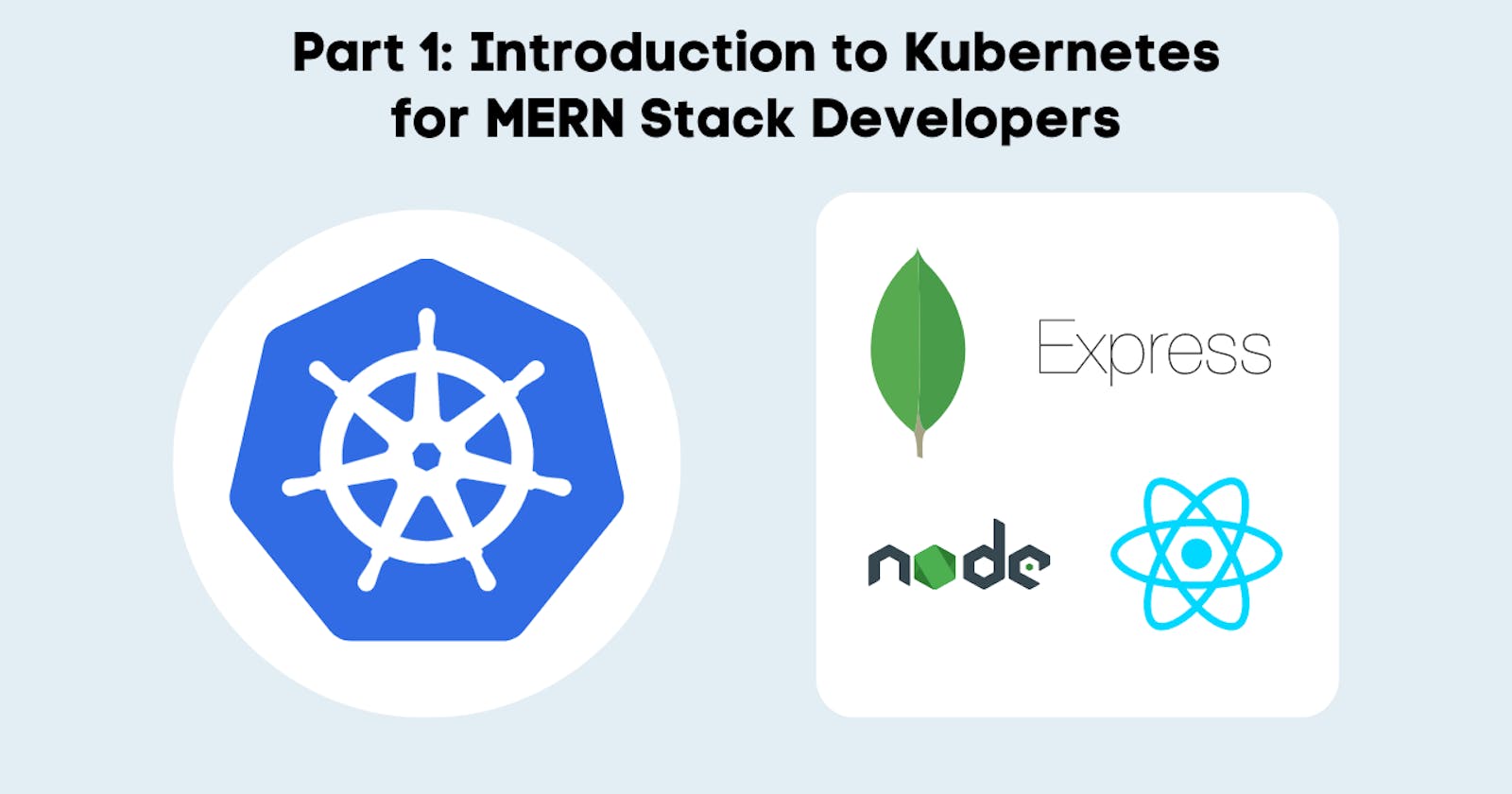Table of contents
Welcome to the world of Kubernetes, a powerful tool that can elevate your MERN (MongoDB, Express.js, React, Node.js) stack applications to new heights of scalability and efficiency. In this series, we will embark on a journey to demystify Kubernetes and empower you, a MERN stack developer, to wield its potential.
Why Kubernetes?
Picture this: you've built a remarkable MERN application, and it's time to unleash it into the digital wilderness. But wait, as more users flock to your app, demands spike, and you're facing the challenge of managing numerous containers, ensuring availability, and scaling effortlessly. This is where Kubernetes comes to your rescue.
At its core, Kubernetes is a container orchestration platform. Think of it as a smart conductor directing a symphony of containers, which are portable, self-sufficient units holding your application and all its dependencies. Kubernetes handles the deployment, scaling, and management of these containers, so you can focus on crafting your MERN magic.
The Microservice Revolution: A New Paradigm
Microservice architecture has revolutionized how businesses construct and deliver applications. By slicing complex applications into small, independently scalable modules, companies gain the flexibility to:
Independent Development and Deployment: Teams can work autonomously on specific application modules, facilitating rapid development and deployment cycles.
Scalability: Applications can be scaled efficiently, with each microservice managed and operated individually.
However, with the move from legacy monoliths to microservices, a new challenge emerged – the need to manage and orchestrate a multitude of containerized applications. Each container image embodies a microservice, demanding seamless management and scaling, but handling thousands of containers posed a daunting task.
Comparing Docker and Kubernetes: Unleashing Kubernetes Magic
You might be familiar with Docker, another essential tool for containerization. While Docker allows you to package applications and their dependencies, Kubernetes takes it to the next level:
Orchestration: Kubernetes orchestrates containers into coherent applications, handling scaling, load balancing, and application deployment, while Docker focuses on creating and managing containers.
Auto Scaling: Kubernetes can automatically scale your application based on demand, spinning up new instances when traffic spikes. Docker lacks this built-in auto-scaling capability.
High Availability: Kubernetes ensures high availability by distributing containers across multiple nodes, enabling fault tolerance. Docker alone does not offer native high availability features.
Service Discovery: Kubernetes provides automated service discovery and load balancing, simplifying network setup. Docker requires additional tools for robust service discovery.
Configuration Management: Kubernetes offers features like ConfigMaps and Secrets for centralizing and managing configuration data. Docker handles configuration at the container level.
Understanding Kubernetes Architecture: A Peek Behind the Curtain

Before we dive into the practical magic, let's take a peek behind the curtain to understand Kubernetes' architecture. Imagine a bustling city where everything is meticulously organized:
Master Node(Control Plane): This is the city's brain center, comprising several essential components:
API Server: The command center where you issue orders to Kubernetes.
etcd: Kubernetes memory, a reliable database storing the entire configuration of your cluster.
Controller Manager: The orchestrator, ensuring the desired state of your application is maintained.
Scheduler: The matchmaker, assigning tasks to worker nodes.
Worker Nodes(Data Plane): These are like the city's workforce, each equipped with:
Kubelet: The gatekeeper, ensuring containers are up and running in pods.
Kube Proxy: The traffic cop, managing network communication among pods.
Container Runtime: The construction worker, executing container commands.
The Kubernetes Lexicon: Let's Keep It Simple
Now let's grasp a few fundamental terms:
Pods: Pods are the smallest units in Kubernetes, like your application's building blocks. They hold one or more containers, tightly coupled and sharing resources.
Deployments: Think of Deployments as blueprints for your pods. They ensure that a specified number of pod replicas are running at all times, even if a server goes astray.
Services: Services provide networking and communication for your pods. Imagine a reception desk that routes visitors to the correct pods, regardless of their ever-changing locations.
Ingress: Like a majestic gateway to your application, Ingress manages external access, routing incoming traffic to the right services within your cluster.
ConfigMaps and Secrets: These are treasure chests storing your app's configuration and sensitive information, making them easily accessible to your containers.
Getting Our Hands Dirty:
Enough theory, let's venture into practice! Imagine you're building a MERN app, and your MongoDB, Node.js backend, and React frontend each reside in separate containers. Kubernetes, our guiding star, will help us deploy and manage this constellation of containers.
Imagine This Scenario:
Kubernetes receives your command to deploy your app.
It orchestrates pods to house each container - MongoDB, Node.js, and React.
A service ensures these pods can talk to one another.
Ingress opens the door to users eager to explore your app.
Your Takeaway:
By embracing Kubernetes, you're simplifying the complex, automating the mundane, and unleashing the potential of your MERN stack apps. This series will be your guide, breaking down each step and leading you toward Kubernetes mastery.
In Part 2, we'll roll up our sleeves and set up a Kubernetes environment locally using Minikube, so you can experiment and learn in a controlled space. Stay tuned, and get ready to embark on your Kubernetes journey!
Remember, every challenge presents an opportunity, and Kubernetes is your toolkit to transform challenges into triumphs in the world of MERN development. Get ready to embrace a new era of scalability, availability, and management for your applications.
And don't forget to connect with me on social media to stay updated with the latest tips, tutorials, and guides:
Connect with me on LinkedIn: shaikahmadnawaz
Follow me on Twitter: shaikahmadnawaz
